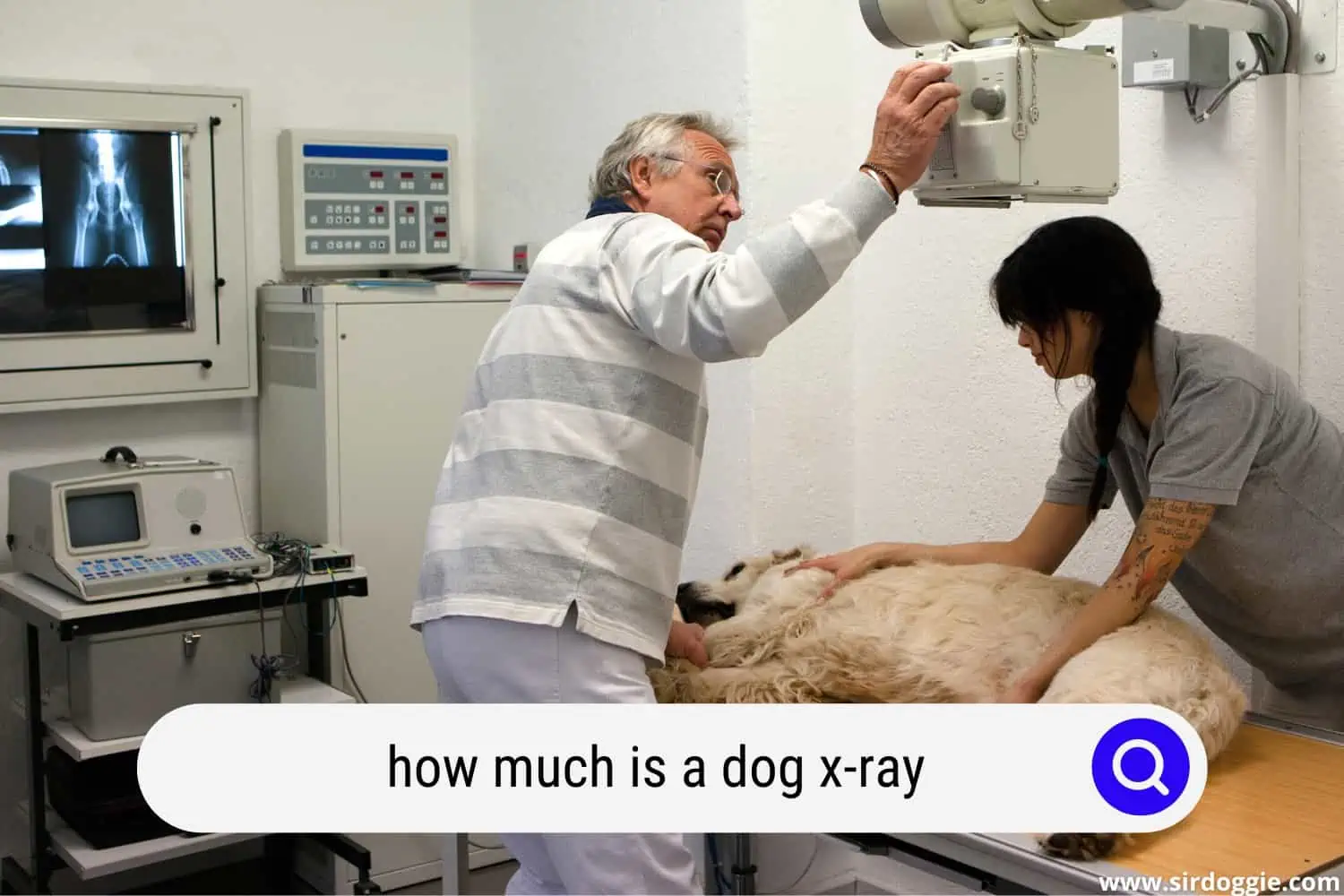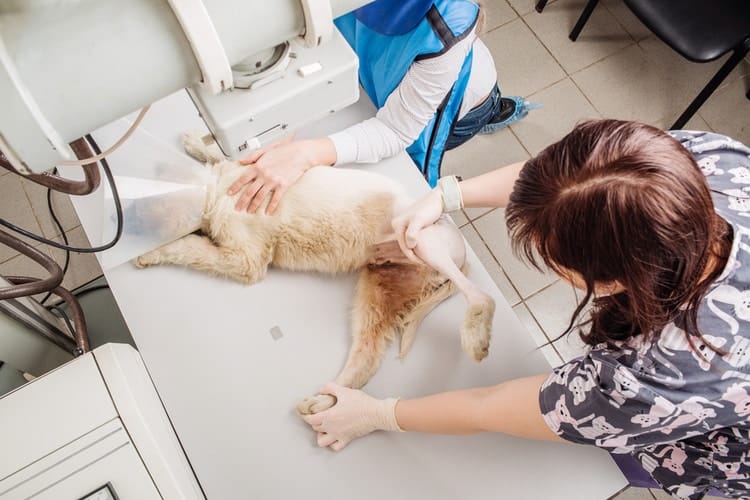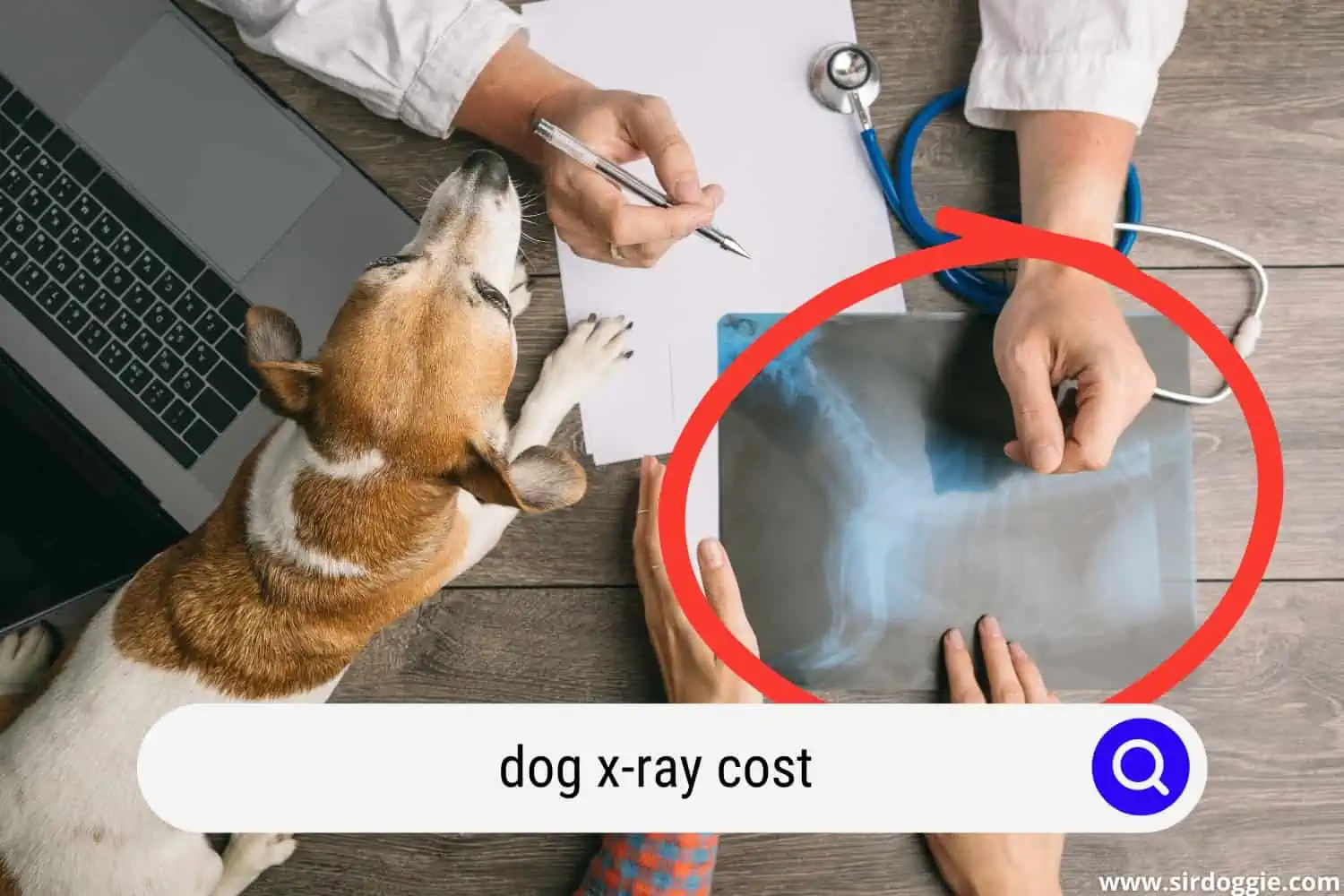How Much is a Dog X-Ray? [ANSWERED]
So, how much is a dog x-ray? The average cost for dog x-rays ranges from $80 to $400+ and depends on what area needs to be x-rayed and if more than one x-ray is required.
Getting a dog is usually one of the happiest moments in life. You welcome them home, introduce them to the whole family, and start imagining all the fun and loving moments you’ll spend together.
What you don’t imagine is some of the possible medical treatments that could pop into your dog’s life. While it isn’t something you want to think about all the time, it’s important to know general information about dog medical care.

Dog x-rays fairly inexpensive compared to other vet costs and is a painless procedure for your dog.
Before you go too much into how much an x-ray will cost for your dog, you need to understand when and why your dog might actually need to get one. You may be surprised to learn that x-rays are a fairly common medical procedure for dogs.

Related Reading: The Difficult Decision on When to Put a Dog Down With Torn ACL
Average Dog X-Ray Costs
Wondering “How much does a dog x-ray cost?” is completely rational. While you may be familiar with more common types of veterinary care, x-rays don’t usually make the top of the list. Like all medical treatments, the cost of an x-ray can vary.
In the United States, the general costs for x-rays tend to range from 0. That’s a big range, right? Don’t panic.
The cost of an x-ray depends on many different factors. Your veterinarian will be able to walk you through your dog’s specific needs when you bring them in.
Reasons Dogs Might Need An X-Ray
Before you start thinking about how much an x-ray will cost, you need to understand when your dog might actually need to get one! You may be surprised to learn that x-rays are a more common medical procedure than you’d think.
It’s not that dogs are hurting themselves all the time and landing in x-ray machines on a weekly basis. Actually, x-rays can help veterinarians learn a lot of valuable information about your dog’s health.
Here are some situations when your dog may need an x-ray:
Swallowed Foreign Object:
It’s almost like the movies, but the reality is that your dog may end up swallowing something that is not meant to be in their body, let alone pass through it. If the object doesn’t pass naturally, the vet may want to do an x-ray. This will help them see where the object is, so they can make a plan about getting it out.
Broken Bones:
This is the reason that you’re probably thinking of. Even if your vet isn’t positive that your dog has broken a bone, performing an x-ray will allow them to learn the extent of the damage.
Orthopedic Issues:
Other than broken bones, dogs may experience other orthopedic issues such as hip dysplasia. The x-ray helps your vet see what needs to be fixed in your dog’s body.
Post-Op Procedures:
After your dog has surgery, it is likely that your vet will want to check in after some time to see what progress is being made. An x-ray is a non-invasive way to check to see how your dog is healing after a surgical procedure.
Stones:
Dogs can experience different types of stones in their bodies including kidney and bladder stones. An x-ray is a helpful tool in the case of calcified stones because they show up very well, making it easy for the vet to understand the condition of your dog.
Cancer:
If your vet suspects that your dog may be suffering from cancer, they may perform an x-ray to see if they can locate a tumor in your dog’s body. Keep in mind that not all tumors show up clearly on x-rays.
Pregnancy:
While ultrasounds are the typical way of viewing pregnancies, x-rays can be performed from the 45th day on. At that time, the puppies have developed their skeletons and they are solid enough to be seen on an x-ray. This is a good way for vets to figure out how many puppies your dog is carrying.

Factors that Influence Cost for a Dog’s X-ray
As you remember, x-rays can range in price depending on a number of different factors. So, what are these factors?
- Number of Views Needed: some vets will want to take x-rays from a number of angles. This can help them better address the issue or find what is being looked for. Taking more x-rays means increasing costs.
- X-Ray Target Location: another factor that influences cost is what part of the dog’s body needs to be explored. It is easier to take an x-ray of certain areas than others, and vets charge accordingly.
- Need for Sedation: let’s face it, some dogs just are not comfortable with sitting still for the vet, especially when it comes to procedures that may feel scary. If your dog is nervous or in pain, the vet may choose to sedate them. This will raise the cost, but be more comfortable for your dog.
- Contrast Agents: vets are able to use substances that can enhance the visibility of the target of the x-ray. This is not done all the time and will add an extra fee to the x-ray charges.
- Your Location: there is no way to determine one cost for x-rays across the country. Depending on your geographic location, the price of x-rays will vary and fall in line with the cost of living.
- The Vet: each vet functions with a different set of financial rules. Depending on whether you go to a clinic or private office, the costs will vary. If you are on a strict budget, you can try talking to different vets to learn their x-ray prices.
How to Afford the Price of a Dog’s X-Ray
When it comes time to bite the bullet and perform the x-ray, you may feel stressed about the cost. There are a few proactive things you can do to try and improve the situation:
- Try Insurance: if you do not have insurance for your dog already, you can try looking into your options. There are many plans that offer big discounts for different procedures, including x-rays. If you find an insurance plan for your dog, the next step will be to locate a vet who accepts the specific insurance.
- Consider Vets in Training: veterinarians have to learn somewhere, right? There are many teaching schools that offer services like x-rays at a lower price than you would pay at your typical vet’s office.
- Payment Plan or Discount: if you’ve been going to your vet for a long time, there is a chance that you could pay the x-ray costs over time. If you ask about the possibility of a payment plan, your vet may be able to help you or even offer a discount.
Final Thoughts
While it’s not always fun to think about extra medical services for your dog, it’s an important part of being a pet owner.
Being aware of the cost of x-rays will prepare you for it if and when the time comes for your dog to undergo the procedure. Remember that prices vary and will depend on a combination of factors.

Family Dog Expert Author
Hi there! I’m Stuart, a devoted dog lover and family dog expert with over a decade of experience working with our furry companions. My passion for dogs drives me to share my knowledge and expertise, helping families build strong, loving bonds with their four-legged friends. When I’m not writing for SirDoggie, you’ll find me hiking, playing with my beautiful dog, or studying music.